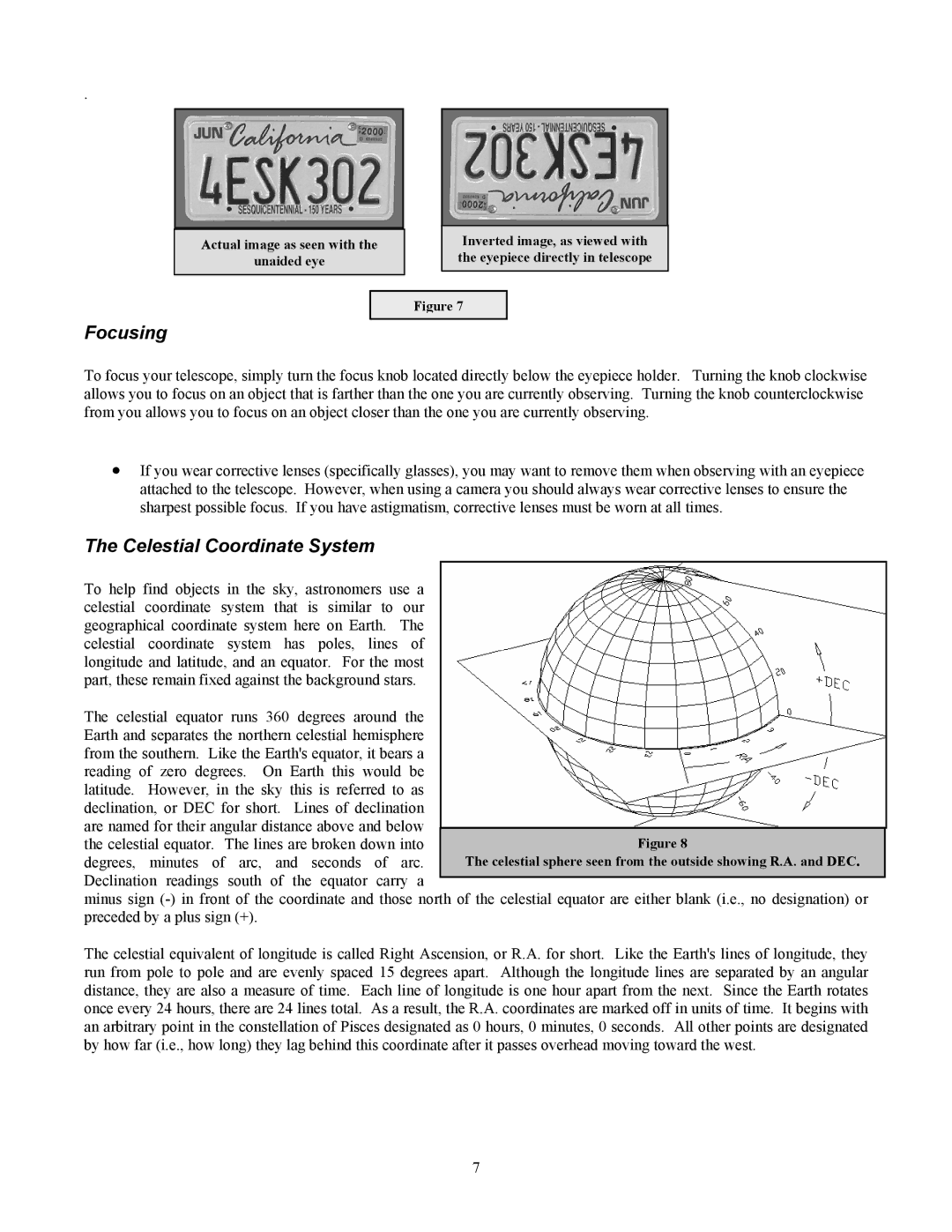80 specifications
The Celestron 80, commonly referred to as the Celestron Astromaster 80, is a popular choice among amateur astronomers and nature enthusiasts alike. This versatile telescope combines portability, ease of use, and impressive optical performance, making it an excellent introduction to the world of astronomy.One of the primary features of the Celestron 80 is its 80mm aperture. This size allows for a bright and clear view of celestial objects, even in less-than-ideal conditions. The telescope employs a fully coated optical system, which enhances light transmission and improves image clarity. As a result, users can enjoy sharp, detailed views of planets, the moon, and various deep-sky objects such as star clusters and nebulae.
The design of the Celestron 80 is particularly user-friendly. The telescope is equipped with a simple alt-azimuth mount, providing both vertical and horizontal movement. This makes it easy to track objects across the night sky. The mount is also lightweight and portable, making the telescope an ideal companion for on-the-go stargazing adventures or nature observation excursions.
Another standout characteristic of the Celestron 80 is its versatility. It comes with a couple of eyepieces, allowing users to switch magnification levels to suit their viewing preferences. The included finderscope simplifies locating celestial objects, ensuring that even novice users can quickly find and observe various targets.
The Celestron 80 also showcases advancements in technology, including its sturdy, adjustable tripod that ensures stability during use. Additionally, the telescope is designed with user comfort in mind, featuring an adjustable height to accommodate various viewing positions.
For those interested in astrophotography, the Celestron 80 offers several opportunities for capturing images of the night sky. With the proper accessories, users can attach a camera to the telescope, making it a suitable option for wide-field astrophotography.
In summary, the Celestron 80 is an excellent entry-level telescope that offers a powerful combination of features, technology, and portability. Its impressive optical performance, user-friendly design, and versatility make it a favorite among both beginners and seasoned enthusiasts. Whether you wish to observe the craters of the moon or the rings of Saturn, the Celestron 80 is poised to provide an enjoyable and fulfilling viewing experience.

